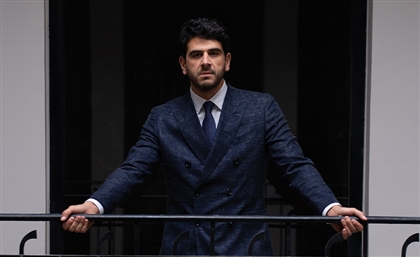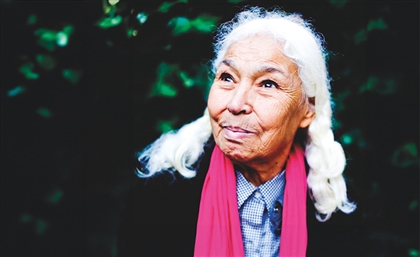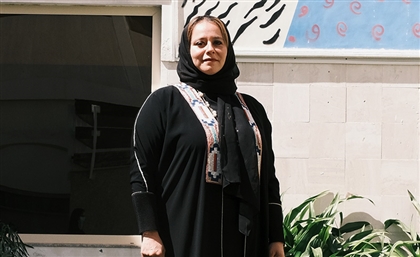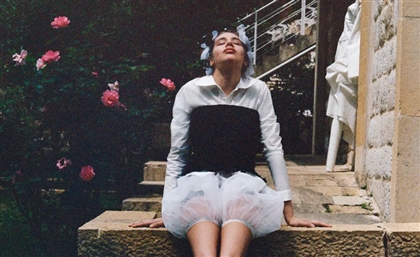Restoration of Al Zahir Baybars Mosque Was 16 Years in the Making
The 800-year old abandoned marvel in Downtown Cairo is now open to the public after 16 years of delays.
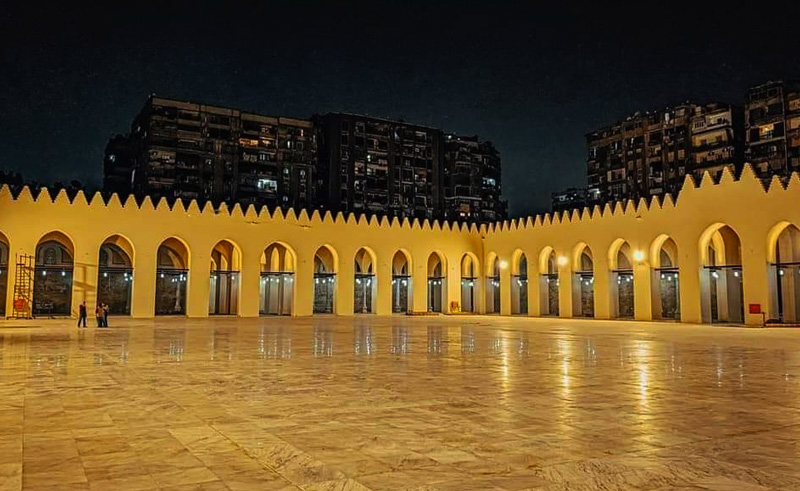
Despite losing its dome along with its other defining decorations, Downtown Cairo’s Al Zahir Baybars Mosque always maintained a sense of grandeur through its colonnades, hypostyle interior and the marble columns supporting it. Built in 1267, the mosque functioned till the 16th century before it deteriorated and was then used for storage by the Ottomans.
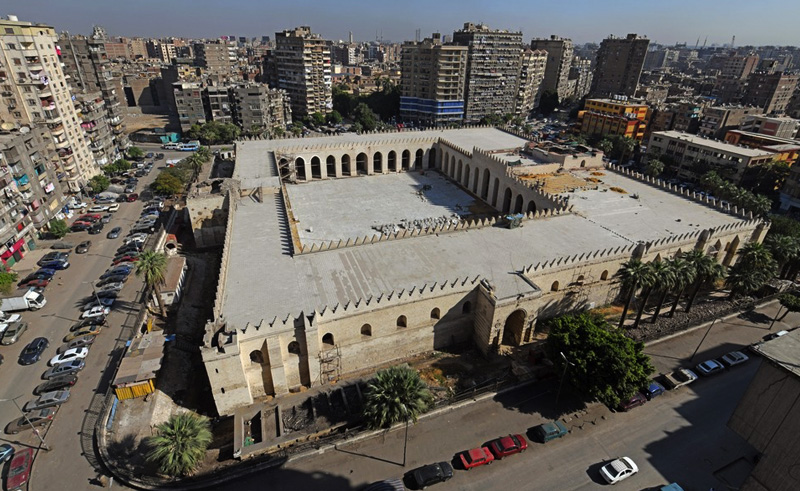 The restoration project began in 2007 and was funded by the government of Kazakhstan, under the supervision of the Egyptian Ministry of Tourism and Antiquities. Halted numerous times, the project has been completed 16 years later. Now, the mosque’s entrance portals, which were considered to feature the very first use of ablaq masonry in Cairo, have finally been reopened.
The restoration project began in 2007 and was funded by the government of Kazakhstan, under the supervision of the Egyptian Ministry of Tourism and Antiquities. Halted numerous times, the project has been completed 16 years later. Now, the mosque’s entrance portals, which were considered to feature the very first use of ablaq masonry in Cairo, have finally been reopened.
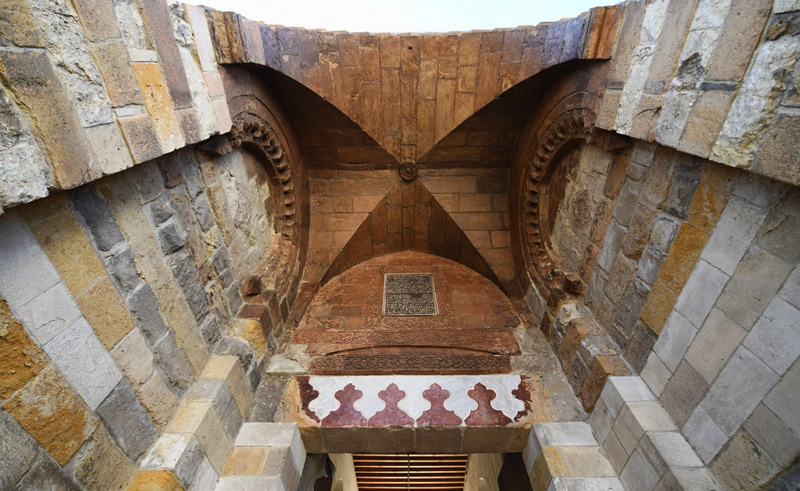 Al Zahir Baybars Mosque was built with lightweight bricks around a time when there was a shift in jurisprudence. Therefore it featured a medley of architectural elements aimed at presenting a novel outlook while maintaining an air of Cairo’s tradition to gain legitimacy.
Al Zahir Baybars Mosque was built with lightweight bricks around a time when there was a shift in jurisprudence. Therefore it featured a medley of architectural elements aimed at presenting a novel outlook while maintaining an air of Cairo’s tradition to gain legitimacy.
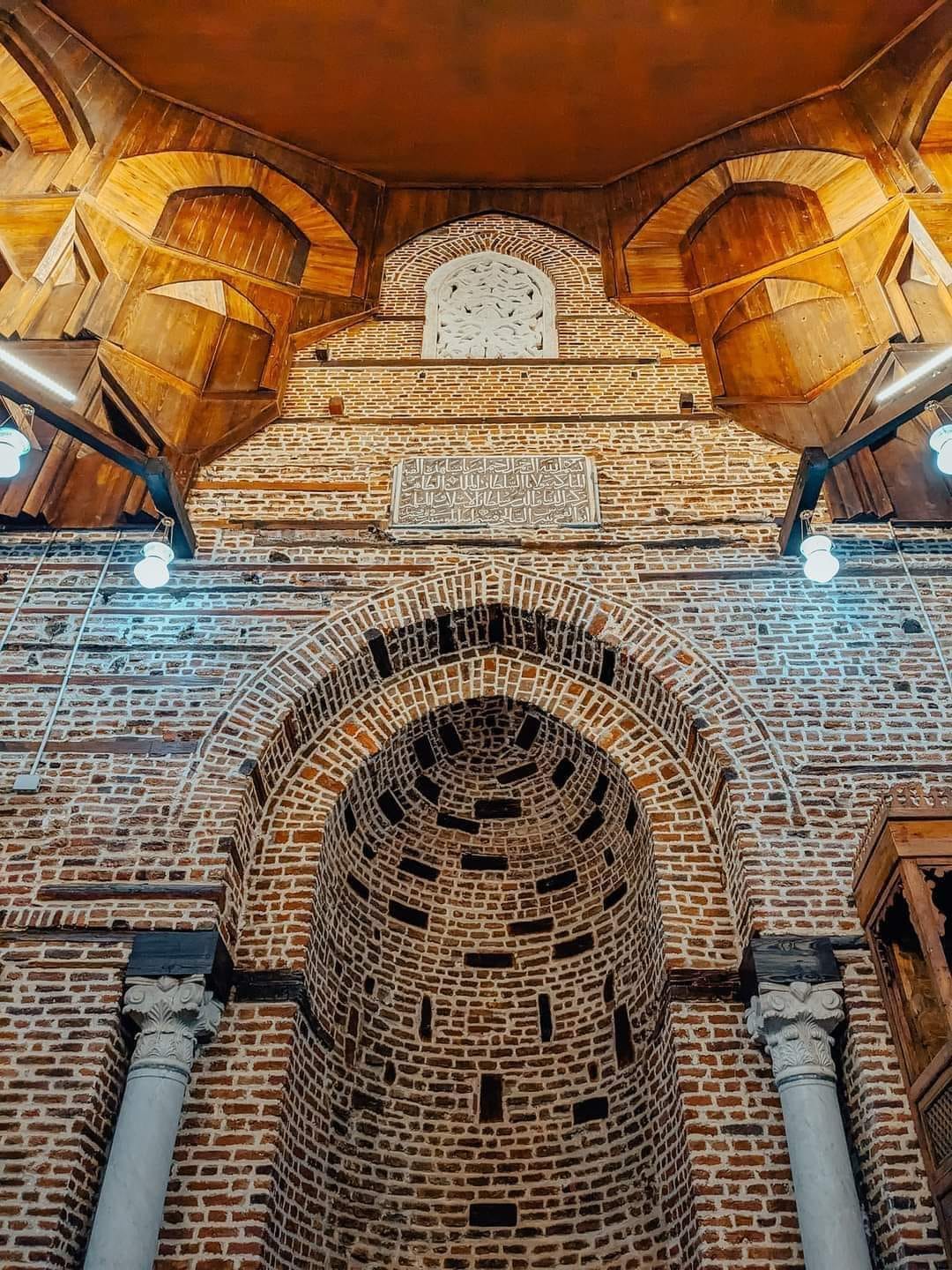 Setting a strong foundation for Mamluk rule, Sultan Al Zahir Baybars put a lot of emphasis on a wooden dome that was lost with time. Minarets sat above all four of the mosque’s entrance portals, having one more than Al Hakim mosque yet all were similar in architecture.
Setting a strong foundation for Mamluk rule, Sultan Al Zahir Baybars put a lot of emphasis on a wooden dome that was lost with time. Minarets sat above all four of the mosque’s entrance portals, having one more than Al Hakim mosque yet all were similar in architecture.
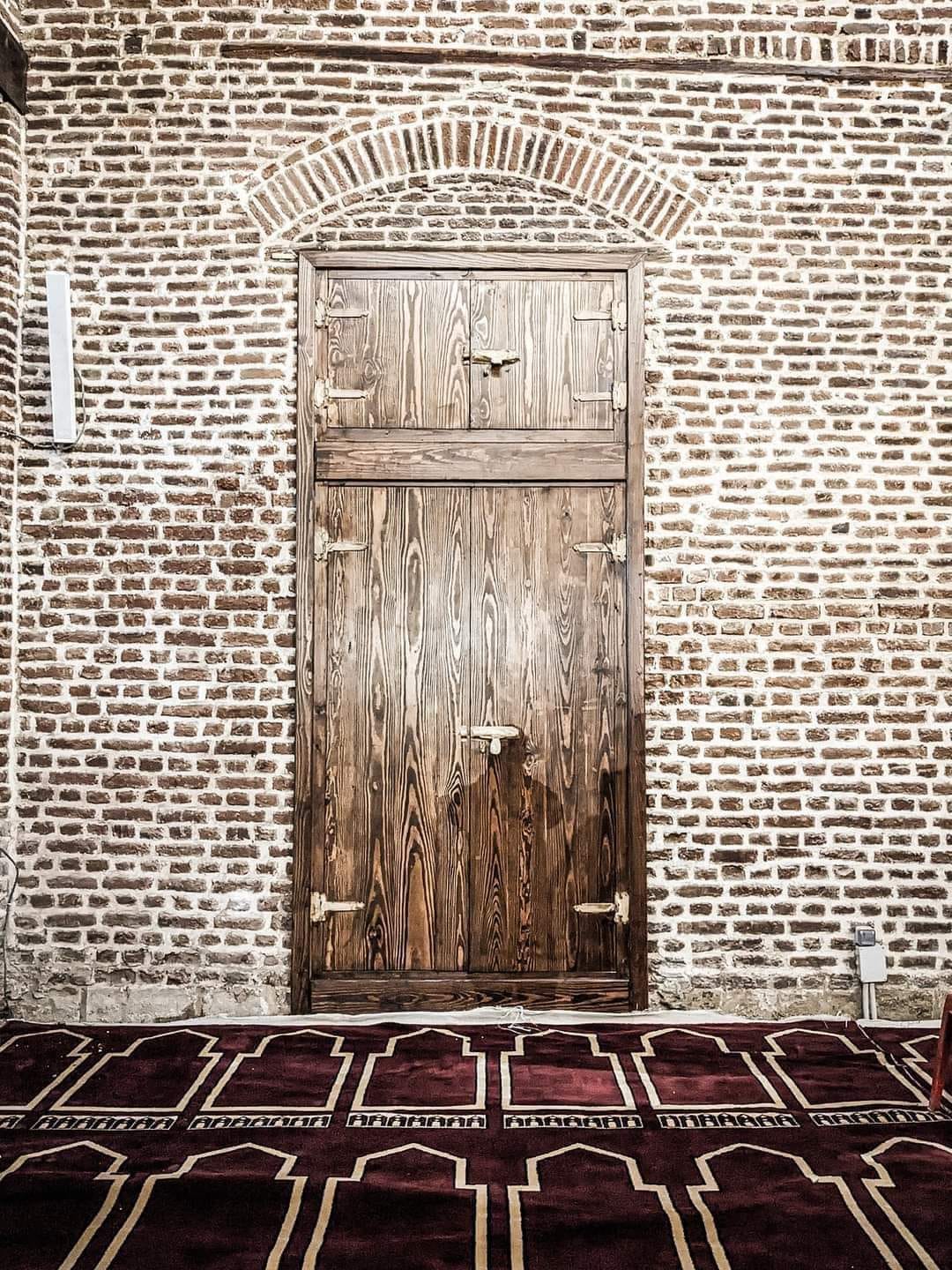 Visual themes from different historical foundations were borrowed to highlight the new shift’s adherence to previous ideologies. Drawing from Fatimid gates, groin vaults were present in the southwestern and northeastern entrance, and cushion voussoirs were used over the main entrance and keel arches also drew from the previous tradition.
Visual themes from different historical foundations were borrowed to highlight the new shift’s adherence to previous ideologies. Drawing from Fatimid gates, groin vaults were present in the southwestern and northeastern entrance, and cushion voussoirs were used over the main entrance and keel arches also drew from the previous tradition.
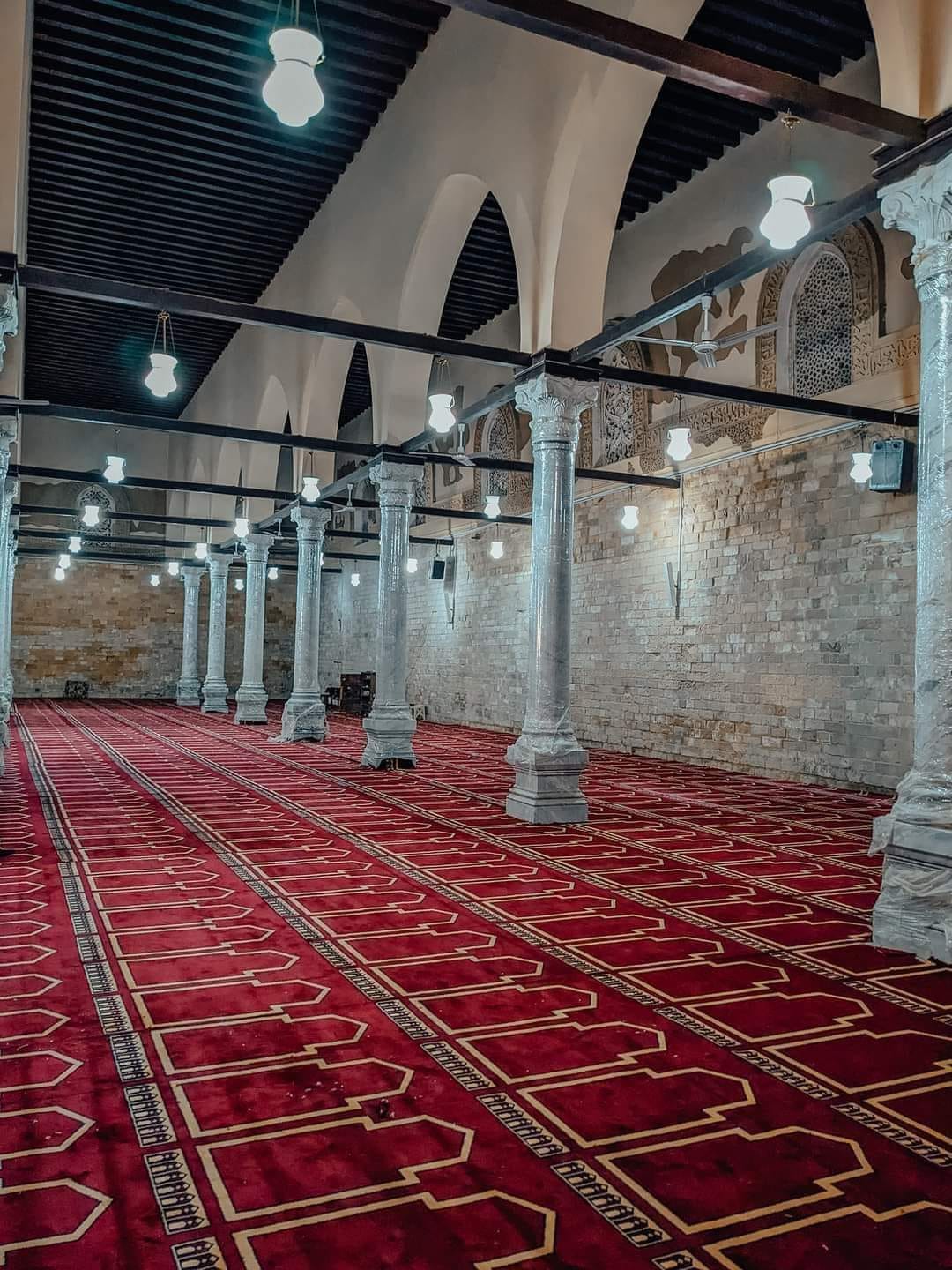 Wooden pendentives can be seen in the restored prayer hall, complemented by stucco foliage ornaments that are scattered across the qibla wall along with Kufic inscriptions. While most of the interior is covered by red bricks, an element uncommon within mosques, the exterior was returned to its fortress-like appearance.
Wooden pendentives can be seen in the restored prayer hall, complemented by stucco foliage ornaments that are scattered across the qibla wall along with Kufic inscriptions. While most of the interior is covered by red bricks, an element uncommon within mosques, the exterior was returned to its fortress-like appearance.
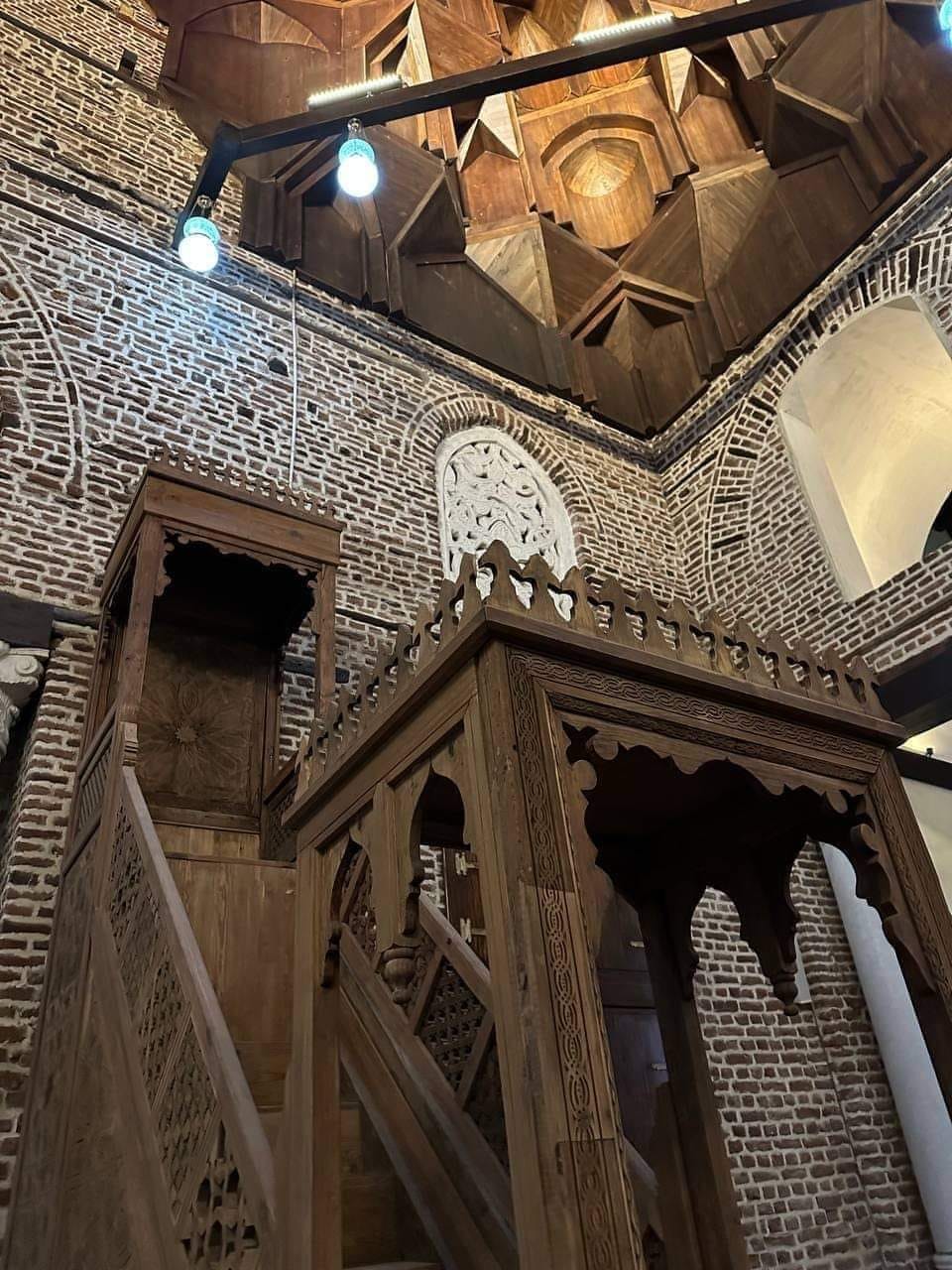 Photography Credit: Abdallah Hebeshy
Photography Credit: Abdallah Hebeshy
- Previous Article Italian-Palestinian Duo No Input Debuts Eponymous Electro EP
- Next Article 7 Programs That Will Let You Embrace Egyptian Culture









